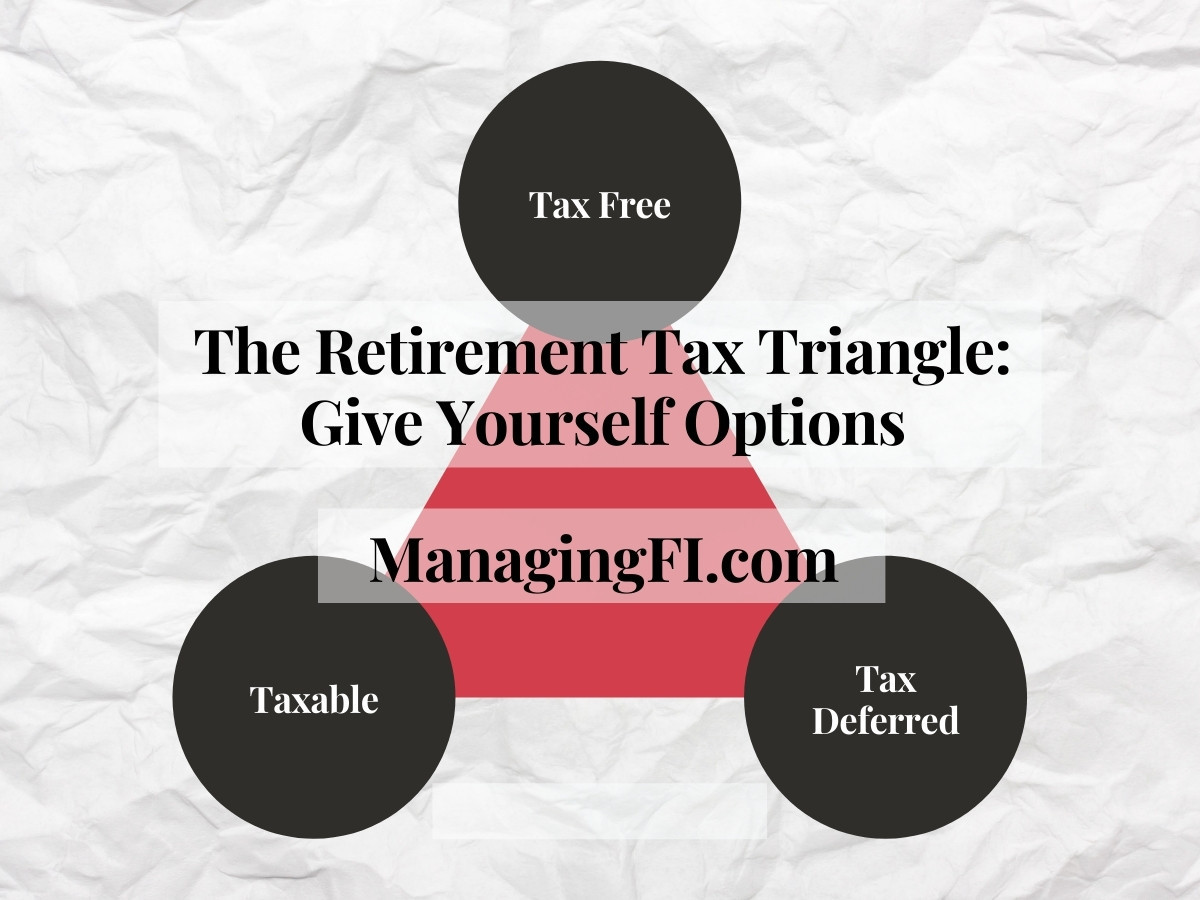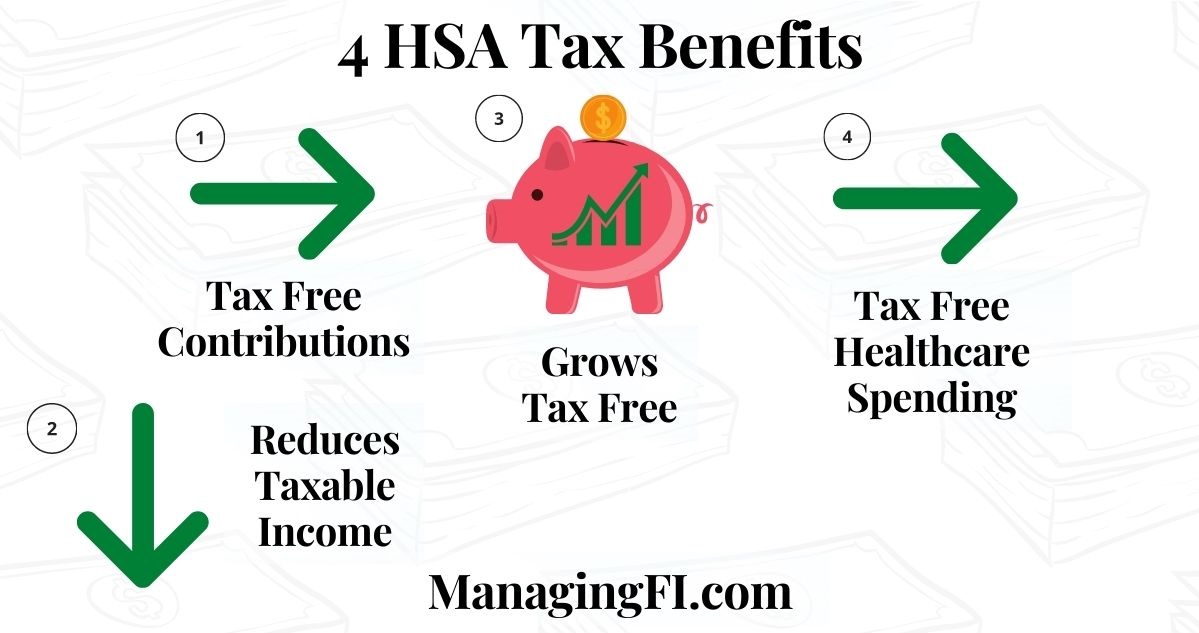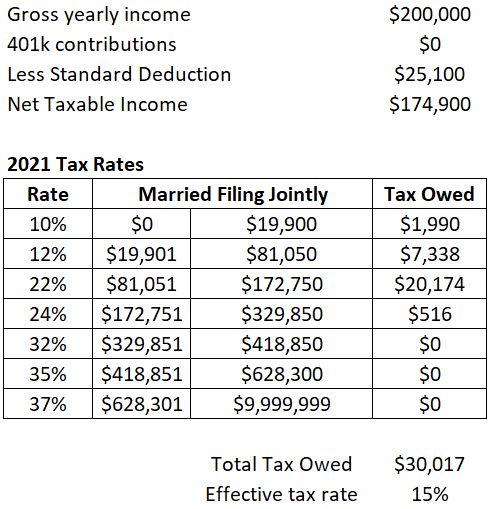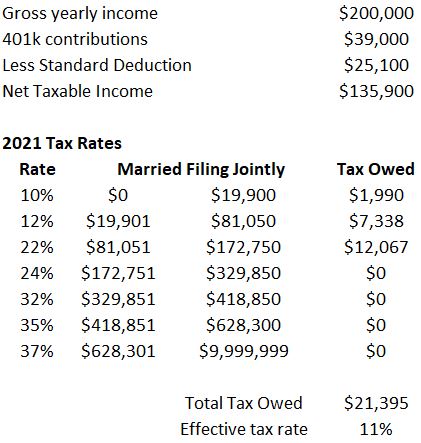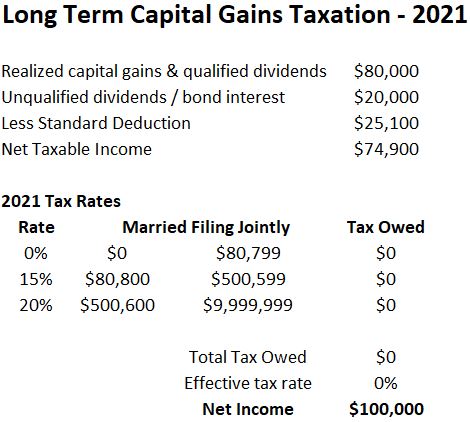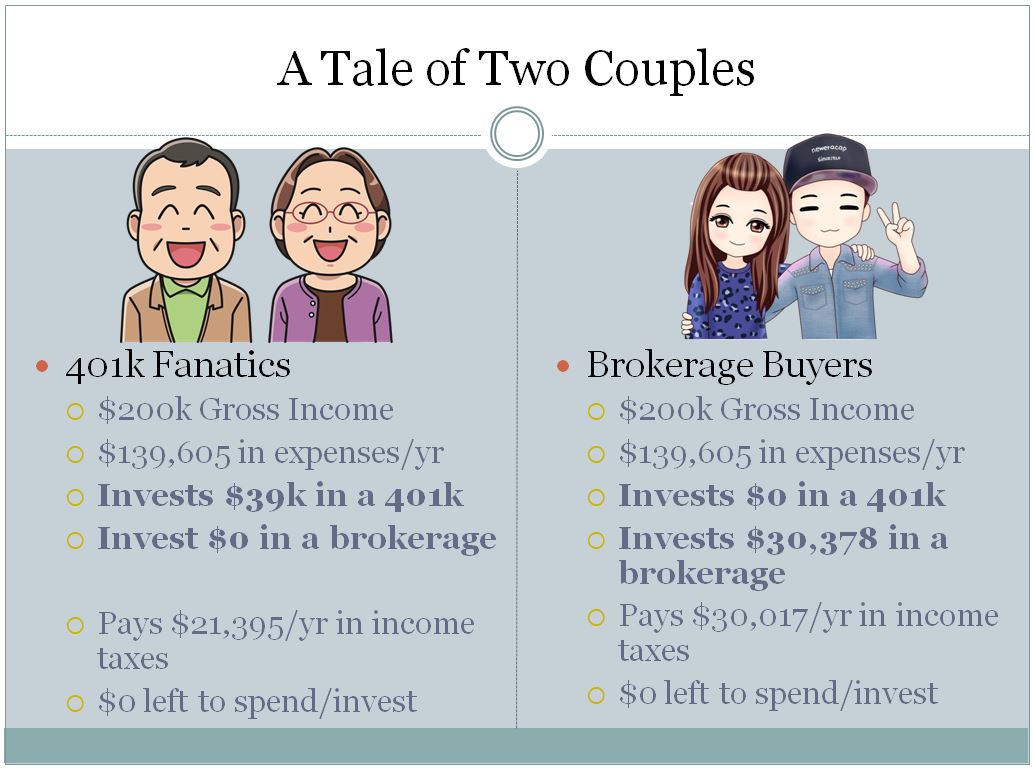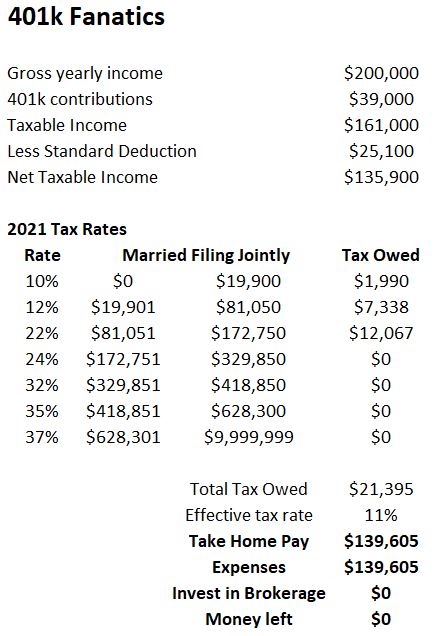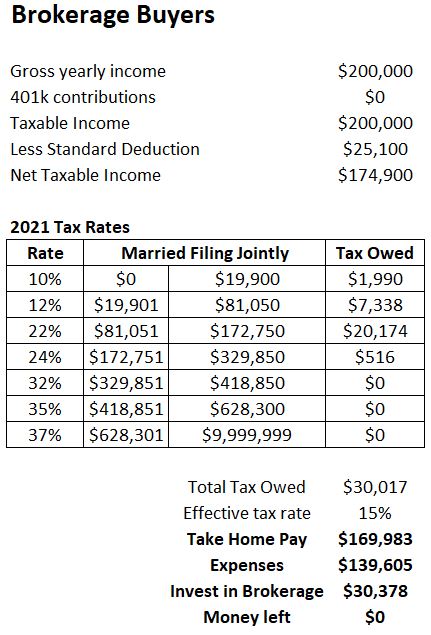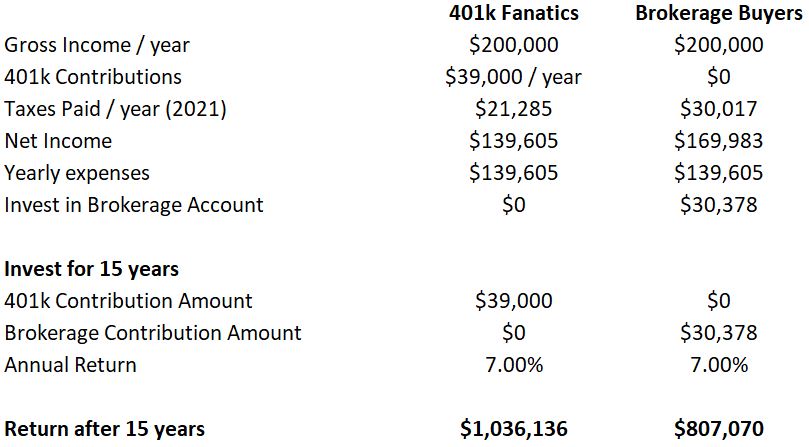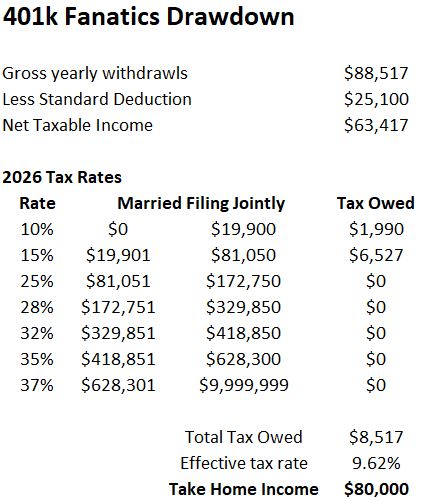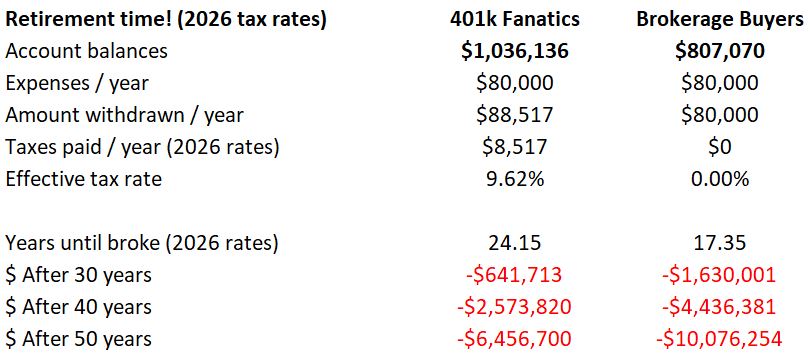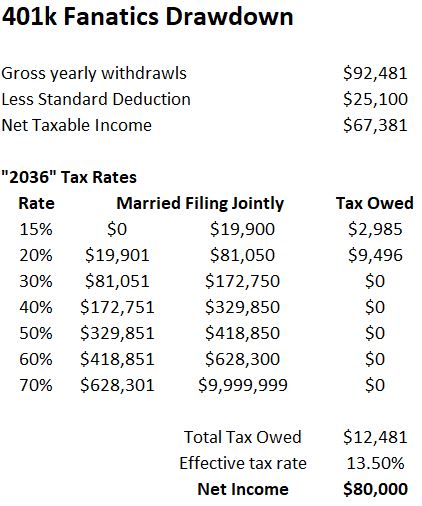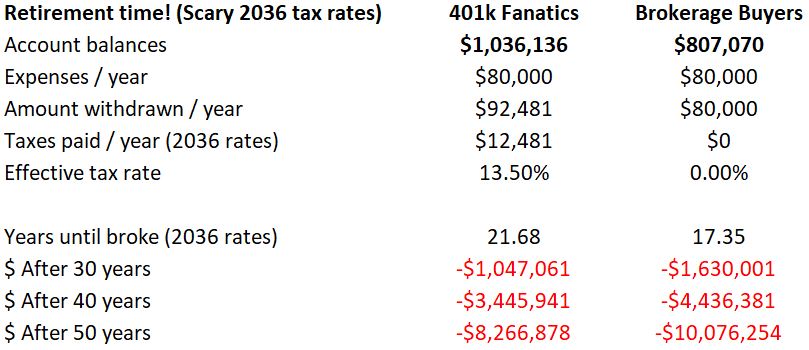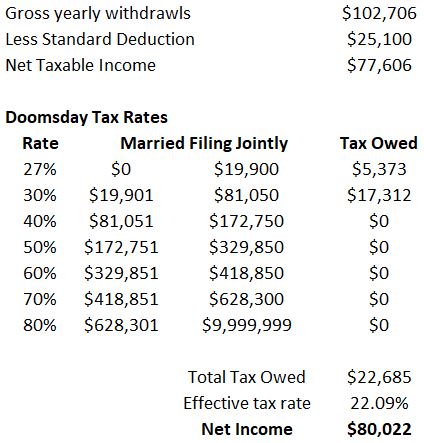BLUF: It’s impossible to predict how future tax laws will change. By saving in all retirement tax triangle accounts with diverse tax treatment we give ourselves more options to control our taxation in retirement.
When you get into the details of saving for retirement, one thing you figure out is that not knowing the future makes planning really hard. One planning area where this is especially difficult is the area of taxation. One this is for certain though, you’re going to have to deal with taxes in retirement.
Income taxes, capital gains taxes, federal, state, foreign…big brother wants a piece of your money. If you’re…human, then you despise taxes and want to do what you can to minimize those taxes and keep that money.
In this article we’re going to talk about the different ways that you can diversify your investment holdings from a taxation perspective. We’ll walk though examples of how those different tax treatment buckets gives you options to minimize your taxes in creative ways.
The Tax Triangle – Helping To Plan For Future Tax Uncertainty

Why is this topic important in retirement planning? As previously mentioned, paying taxes are one certainty that isn’t going to change. Taxes add on to your future liabilities so you need to account for them in your FI number.
In retirement and early retirement it’s likely that your effective tax rate will fall as most of us will have less income, but it won’t be zero. The 4% rule of thumb doesn’t account for taxes so you need to plan for that as a separate expense.
Oh, and the government changes the tax laws A LOT. Here’s just a sample of the major legislation impacting taxes that has passed over the last 25 years. Well within a normal retirement period. I don’t envy the CPA’s that have to keep up with all of this!
- Taxpayer Relief Act of 1997
- Economic Growth and Tax Relief Reconciliation Act of 2001
- Jobs and Growth Tax Relief Reconciliation Act of 2003
- Tax Increase Prevention and Reconciliation Act of 2005
- American Taxpayer Relief Act of 2012
- Tax Cuts and Jobs Act of 2017
As you can see, it’s a near certainty that US tax laws are going to change over the course of any persons retirement. The laws tend to change in some way every 3-5 years.
As you’ll learn, putting money in all three tax buckets give us some amount of control of our tax rate. We don’t make the tax laws but the amount of income that we can draw from each tax bucket allows us to manipulate our effective tax rate in any given year.
Retirement Income Sources

Many people are working for others as either a 1099 contractor or W-2 employee to make a living. Other than contributing to tax advantaged retirement accounts you don’t have much control over how you’re taxed.
In retirement, however, you have the ability to draw from a number of potential income sources which get different tax treatment.
- Guaranteed Income – Pensions, social security (ordinary income taxes), annuities (taxation varies)
- Business Income – Real estate income, other business income (taxation varies)
- Taxable Investment Accounts – Brokerage accounts (capital gains taxes)
- Tax Deferred Investment Accounts – Traditional IRA accounts (ordinary income taxes)
- Tax Free Investment Accounts – Roth IRA, Health Savings Account (HSA) spent on qualified expenses (tax free)
Guaranteed income is great, but your options are limited on controlling taxation of that money. Business income is very situation specific and is outside the scope of this article. We’re going to focus on the last three investment account options for giving us tax options in retirement since those are more broadly available.
The Retirement Tax Triangle
The tax triangle is a way to describe three different categories of investment accounts that each receive different tax treatment. These categories are: tax free, taxable and tax deferred.
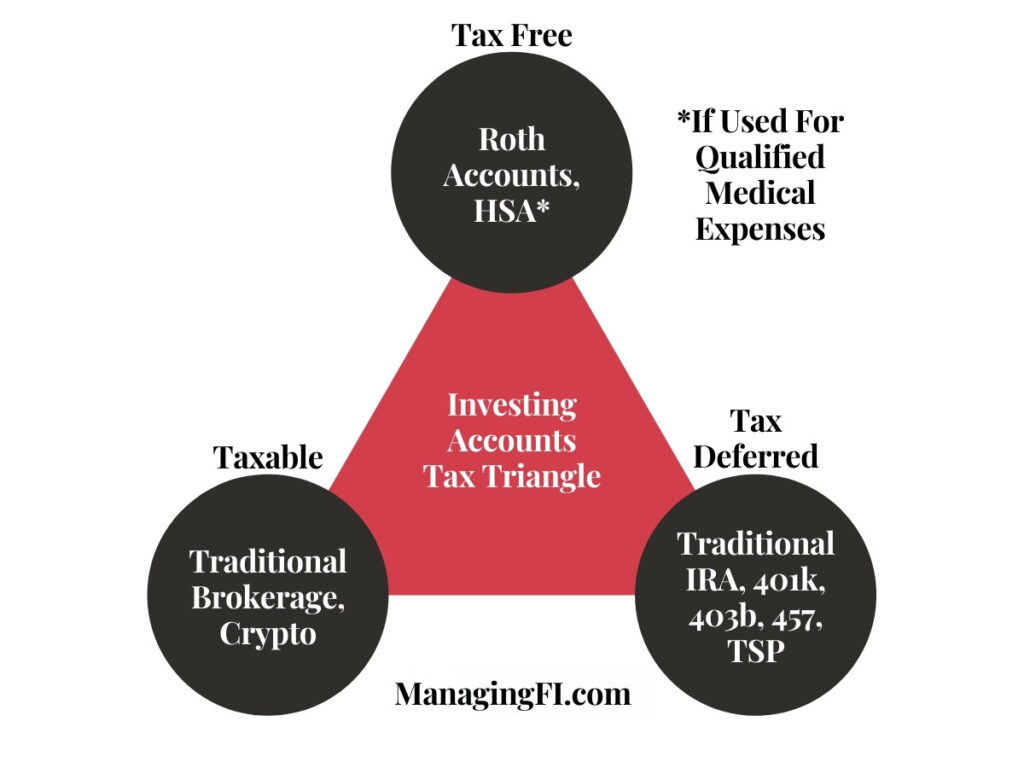
Tax Free Accounts
No taxes are due on the sale of investments or withdrawal of money in tax free accounts as long as the correct rules are followed.
Roth versions of retirement accounts are the most common. You can buy, sell and withdraw contributions at any time. After age requirements are met you can withdraw investment gains tax free. You contribute to them with after tax money.
I wish my parents had started a Roth account for me as a teen, or had at least knew about the Roth early in my 20’s. At $6k/yr it requires a lot of time to build up a lot in that bucket unless you have access to the mega backdoor Roth.
HSA’s, covered extensively here, can be invested. Buying and selling of investments in those accounts is not taxable. When you withdraw money from the account for qualified medical expenses the money is tax free even though you got to contribute to the account with pre-tax dollars!
Cash! There’s no tax on the withdrawal of cash held in bank accounts or taxable investment accounts.
Taxable Investment Accounts

These investment accounts are your standard brokerage accounts at Schwab, Fidelity or Vanguard. You move after tax money into these accounts and invest your money as desired. These could also be crypto brokerage accounts.
Any sale within these accounts is a taxable events and income distributions in the form of interest and dividends are subject to tax. However, investments held for a year and a day and sold get the advantage of special long term capital gains (LTCG) treatment. If you don’t hold investments for over a year and sell them they are considered short term capital gains (STCG) and are taxed as ordinary income like your paycheck.
LTCG get taxed at 0%, 15% and 20% LTCG taxation rates in 2022 which is MUCH lower than ordinary income tax rates. For example here’s how the ordinary tax rate has compared to the the LTCG tax rate in recent years.
Notice that 0% tax bracket? That’s a taxation sweet spot that we’ll discuss more. We definitely want to take advantage of that when possible!

Tax Deferred Investment Accounts

These are some of the most common retirement accounts as they’ve been around the longest. The money is called tax deferred because you get to contribute to the accounts pre-tax, let the money grow without taxation and then the taxation happens when you withdraw the money from the account.
The money withdrawn from the accounts are taxed as ordinary income when withdrawn from the account at your marginal tax bracket. These taxation rates for ordinary income and their taxable income ranges are shown below.

These are most commonly called traditional accounts. Examples of common retirement accounts that are tax deferred are the tradition versions of an IRA, 401k, 403b, 457b and Thrift Savings Plan (TSP).
How Income “Stacks” For Taxation
Before we talk about some of the ways that the tax triangle can be used to minimize taxes in your situation, it’s important to understand the ordering rules for taxing of your income.
Think of taxation order as a cake and the layers are taxed starting at the bottom and working your way up.
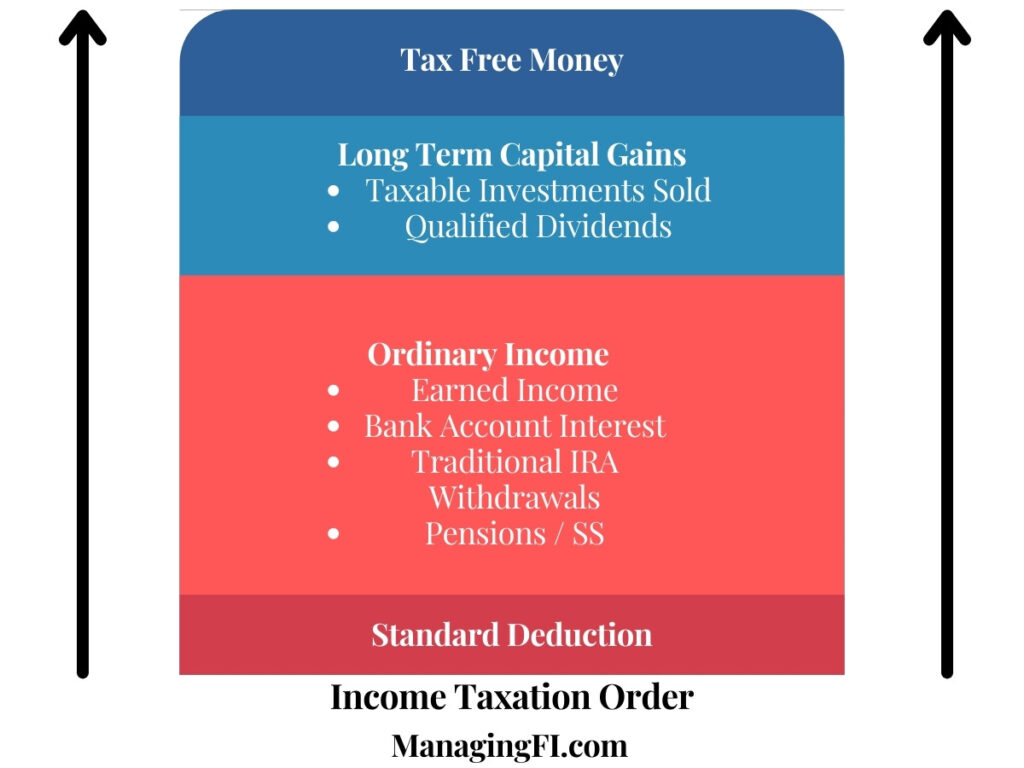
Standard Deduction: Your standard deduction is removed from your ordinary income layer first. In 2022 this is $25,900 for joint filers. If for some reason your ordinary income is less than your standard deduction then it’s used to reduce your long term capital gains.
It’s important to remember that when you look at income tax tables, what is shown is the taxable income left AFTER the standard deduction is removed.
For example, if you made $40,000 in ordinary income as a married couple in 2022, your taxable income after the standard deduction is $40,000 – $25,900 = $14,100. Taxed all at the 10% marginal bracket you’d pay $1,410 in tax for the year on that $40,000 income.

Ordinary Income: Everything that is taxed as ordinary income falls into that layer as the bottom layer. All earned income resides here including salaries, interest income, bonuses, short term capital gains and traditional IRA withdrawals. Social security has some unique tax treatment so it isn’t just taxed completely as ordinary income.
Frequently misunderstood: Bonus tax treatment.
Bonuses are taxed as ordinary income. Your employer may withhold extra money from a bonus but it’s not taxed any differently than your salary. In the end, if you paid extra extra tax on a bonus up front then you’ll get it back at tax time.
Long Term Capital Gains: Investments sold in taxable investment accounts and qualified dividends paid (whether reinvested or not) are all income that receives long term capital gains treatment. As you can see below, the tax rates are FAR lower than ordinary income.

Tax Free Income: Income from Roth withdrawals is tax free as is withdrawals from bank accounts or cash inside brokerage accounts.
LTCG Calculation Example
This may seem obvious to some, but it’s critical to understand how to calculate long term gains properly. It is common to confuse the gains of a sale with the overall cash received from a sale. Let’s walk through an example to make sure that it’s clear.
In 2021 you purchased 200 shares of VTSAX in a taxable brokerage account for $100 per share. This is your cost basis for the investment – what you payed for it. In 2025 those shares were worth $150 per share and you sold all 200 shares.
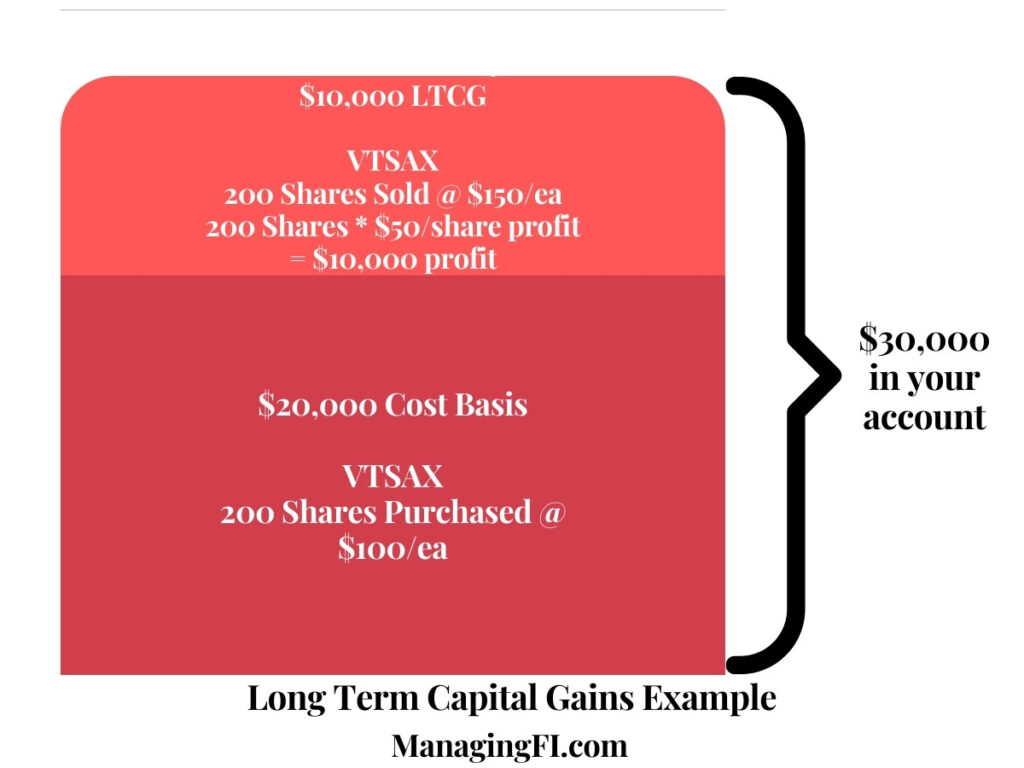
Your brokerage account would show $30,000 in cash from the sale, but you’re only taxed on the capital gains. In this case, you’re taxed on $10,000 of long term capital gains.
Newer investments that haven’t had time to appreciate as much will have less capital gains as a percentage of the sale. Older investments that have had more time to grow will have more capital gains as a percentage of the sale.
Examples Of Tax Triangle Drawdown Flexibility
Now, for the fun part. Showing how having funds in all three buckets of the tax triangle gives you options to control your tax rate. I know, I have a weird idea of fun.
Let’s pretend that for all scenarios a married couple (age 60) needs $60k/yr after taxes to live and are retired. They have no pensions and they won’t take social security until 67. The year is 2021 and those tax brackets will apply. The couple lives in a state that has no state income tax.
Scenario #1: $2M in traditional 401k’s. No money in Roth or taxable accounts. Withdrawing enough to live on, $60k after taxes.
In this case you have limited options. All that money is taxed as ordinary income. You need to pull out $64,310 which will result in you paying $4,310 in federal income taxes. Your effective tax rate is 6.7% ($4,310 / $64,310).
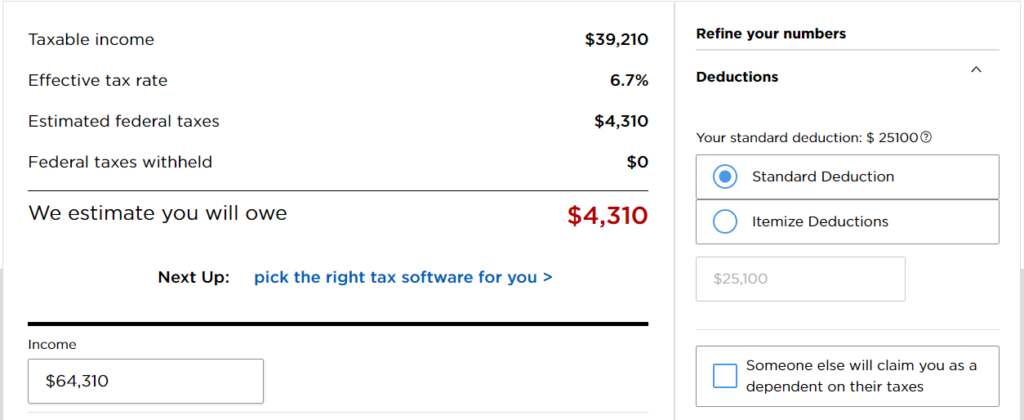
Scenario #2: $2M in traditional 401k’s. No money in Roth or taxable accounts. Withdrawing enough to live on, $60k after taxes. Also, complete $60k in Roth conversions (net of taxes) to reduce future required minimum distributions (RMDs).
Once again, your options are limited to just withdrawing more money from the 401k accounts pushing you into higher tax brackets to pull enough money to cover the Roth conversions. As a result, you need to pull $135,972 from the 401k paying $15,972 in federal income taxes. Your effective tax rate is 11.7% ($15,972 / $135,972).
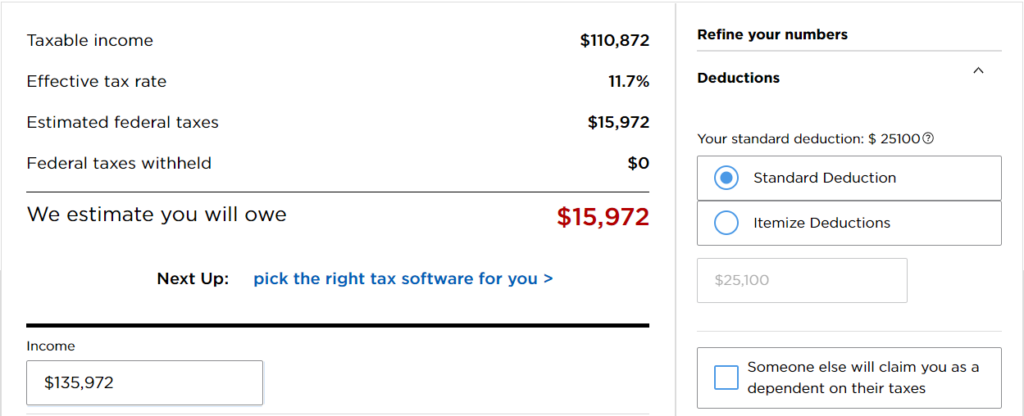
Scenario #3: $1M in traditional 401k’s. $500k in Roth and $500k in a taxable account. The couple needs $60k to live and wants to do a $60k Roth conversion. The $60k to live is pulled from the Roth IRA.
In this case, the couple is going to do the $60k Roth conversion from their 401k. That money is all taxable income and they pay $4,310 in taxes just like in scenario #1. Since $60k in Roth money is withdrawn to live on that is tax free. In total $4,310 in tax was paid on $124,310 ($64,310+$60,000). A total effective tax rate of $4,310 / $124,310 = 3.46%.

Scenario #4: $1M in traditional 401k’s. $500k in Roth and $500k in a taxable account. Taxable account has 5,000 shares of VTSAX at a $50 cost basis, $100 current share price. The couple needs $60k to live and wants to do a $60k Roth conversion. The $60k to live is pulled from the taxable account.
In this case, the couple is going to do the $60k Roth conversion from their 401k. That money is all taxable income and they pay $4,310 in taxes just like in scenario #3.

To get $60k to live on the couple sells 600 shares of VTSAX at $100/ea resulting in $60k in their account. The capital gains on those are 600 shares * ($100/share – $50/share cost basis) = $30,000.

The taxable income is $39,210 in ordinary income from the Roth conversion + $30,000 in LTCG taxes = $69,210 in taxable income. Since this amount is less than $80,800 it’s in the 0% LTCG bracket and the couple will pay $0 in tax on that $30,000!

This makes the taxable account act like a tax free Roth account as in scenario #3. In total $4,310 in tax was paid on $124,310 ($64,310+$60,000). A total effective tax rate of $4,310 / $124,310 = 3.46%.
There are obviously an infinite number of scenarios that could play out using the combination of these accounts. In other words, lots of options!
What’s The Ideal Tax Triangle Mix?
We all love to have definitive answers to questions like this. Unfortunately, there is no perfect answer. The key is to understand the impact of having money in the account mix that you have and coming up with a plan for how you will empty those accounts in retirement.
I think there’s power in trying to save some percentage in all of these accounts as you saw from the earlier scenarios. It gives you the flexibility to deal more effectively with future tax legislation changes.
Some things to think about:
- Think about your own retirement plans and how these accounts will fit into them. Begin with the end in mind and see if your current account mix would work with a drawdown plan.
- If you have a long period planned with no or low income, you can get away with larger tax deferred balances. You can withdraw or Roth convert down those balances before social security or pensions start.
- Roth contributions today instead of traditional IRA contributions eliminate a tax liability in retirement.
- Long term capital gains tax rates have historically been much better than ordinary income tax rates.

What Am I Doing?
If you read my last article about our portfolio composition, you saw this portfolio breakdown below. Traditional 401k accounts dominate our portfolio at the moment at 62.5%. At the moment we’re also saving $50k into tax deferred accounts each year which is also the most that we add to any account. This will accelerate the imbalance although the goal isn’t necessarily to be in balance.

The goal is to make sure that you have some diversity in investment locations and a plan for how to unwind those in a tax optimized way. It’s good to plan but don’t get too fixated on it. Tax planning is based on many variables that are out of control that change frequently. Taxation levels, tax laws and your relationship status (single/divorced/widowed vs. married) all can have major impacts.
In 2026, if no tax legislation changes first, the Tax Cuts and Jobs Act of 2017 will expire and ordinary income tax rates will increase. 12% -> 15%. 22% -> 24%. 24% -> 28%. Mrs. MFI and I both have options to invest in Roth 401k accounts.
Current tax rates are historically low but at our high income they’re still higher than I’m likely to encounter in retirement. Do I want to pay a locked in 24% tax today by switching to a Roth 401k to avoid paying taxes in retirement that are likely lower, but still variable in rate? I don’t know. That’s a tough one that I’m going to have to ponder some more and do some math.
Key Takeaways:
- Tax legislation is ever changing and impossible to predict.
- Investing in a mix of tax deferred, taxable and tax free accounts gives you the greatest flexibility in retirement tax planning.
- Investing in tax deferred accounts today means avoiding taxes at todays ordinary income tax rate in exchange for taxation on this money at future ordinary income tax rates. There will be RMDs. However, keep in mind that you’ll be declaring less income in retirement so your taxes should be far less because you’ll lower tax brackets.
- Investing in Roth accounts today means being taxed at todays ordinary income tax rate in exchange for no taxation in the future. There are no RMDs.
- Investing in taxable accounts today means being taxed at todays ordinary income tax rate in exchange for special tax rates in the future. There are no RMDs.
Like the content? Click here to subscribe to the e-mail list and have the articles delivered to your inbox.

